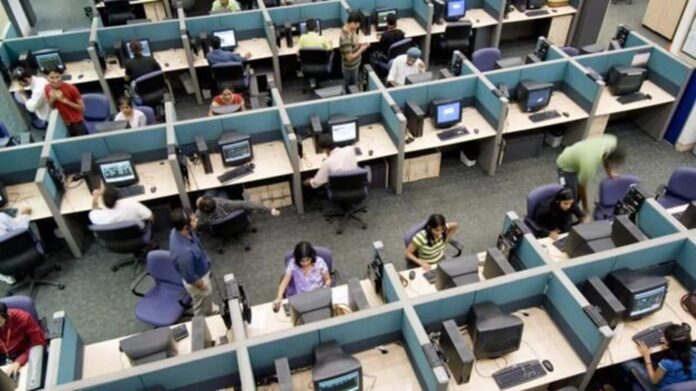However, a second term in power for Donald Trump in the US raises new concerns for this industry. Among these are changes in America’s H1B visa programme, potential tariffs and other regulatory shifts.
During his first presidency, the Trump administration made substantial changes to the H1B visa scheme, which is the lifeblood of the Indian IT industry’s operations in the US.
H1B visas allow skilled foreign workers, particularly in the tech sector, to work in the US temporarily. Indian IT firms heavily rely on these visas to send skilled talent from India, filling in-demand roles at client sites across the US.
But Trump’s policies included tightening the eligibility criteria, raising the wage-floor for H1B workers, and even suspending the issuance of new H1B visas during the covid pandemic. These changes made it more difficult and costly for Indian firms to deploy their employees on US soil.
These policies also meant higher operational costs and a slowdown in visa approval, thus disrupting project timelines. Many companies were forced to raise their hiring of US nationals, driving up labour costs significantly.
The second Trump term could see the reinstatement or further tightening of these policies, putting pressure on Indian firms to cut reliance on H1B visas.
Under Trump 1.0, Indian nationals applying for employment-based green cards in the US faced an overwhelming backlog. According to a Congressional Research Service report, due to per-country caps, the wait time for Indian applicants was as long as 195 years in 2019.
This backlog is a pressing issue for skilled Indian workers who aspire to build long-term careers in the US and for the companies that employ them.
The second Trump administration could discourage skilled Indian professionals from working for Indian IT companies in the US, favouring roles at US-based competitors where the path to permanent residency may seem slightly more manageable.
During his first term, Trump’s “America First” policy was synonymous with imposing tariffs on foreign goods to boost domestic manufacturing.
Extending this principle to IT services isn’t a stretch, given that Trump has previously criticized outsourcing. Should he impose tariffs or additional fees on IT services ‘imported’ from Indian firms, it could dramatically alter the cost dynamics between Indian and US heritage firms. Further, tariffs could lower the demand for outsourcing.
An “America First” policy would give US-based IT providers an edge. These companies often employ more Americans to minimize immigration-related problems.
Accenture, for instance, maintains a significant US workforce, reducing its dependence on H1B visas and mitigating the impact of restrictive immigration policies or tariff regimes.
In addition, if Trump seeks to discourage reliance on foreign labour and emphasize local hiring, US-based firms might even get government incentives for prioritizing American workers.
This would make US-based firms more appealing partners for American businesses that want to avoid potential legal and political complications related to outsourcing to India-based firms.
Some Indian IT companies have already begun adapting by expanding their onshore presence in the US. Infosys, for instance, has been hiring American workers and investing in innovation hubs within America, moving closer to its clients. TCS has pursued a similar strategy.
This onshore or nearshore model could be accelerated if the second Trump presidency introduces more restrictive policies. While hiring locally reduces dependence on H1B visas, it does come at a cost.
Labour is more expensive in the US and Indian firms accustomed to competitive cost structures might see lower profit margins. Investing in local skill development and integration with the Indian IT ethos would be essential but costly, potentially affecting the bottom line.
While Trump acknowledges India as a strategic partner, particularly in countering China’s influence, his “America First” policies haven’t always favoured Indian business interests. Trade disputes, tariffs and visa restrictions, if they arrive, would mean that economic considerations could outweigh strategic alliances.
That said, any policies explicitly targeting Indian IT could have broad ramifications. India’s IT industry contributes significantly to the US economy by providing cost-effective technology services to American businesses and generating local employment through indirect job creation. Still, Trump’s first-term record indicates that he is not averse to challenging trade allies if he sees it as beneficial to American workers.
His second presidency would likely press the Indian IT sector to re-evaluate its US-centric model. Possible shifts include accelerated automation to reduce labour costs and compensate for the reduced pool of H1B workers.
Also, to reduce their dependency on the US, Indian IT firms could expand in Europe, West Asia and Africa, where they would face fewer regulatory barriers.
Large Indian IT companies should also intensify their lobbying efforts in Washington, collaborating with US clients and interest groups to advocate policies that recognize the benefits of their services to both the US and Indian economies.
#Trump #Indian #sector #reevaluate #UScentric #model
